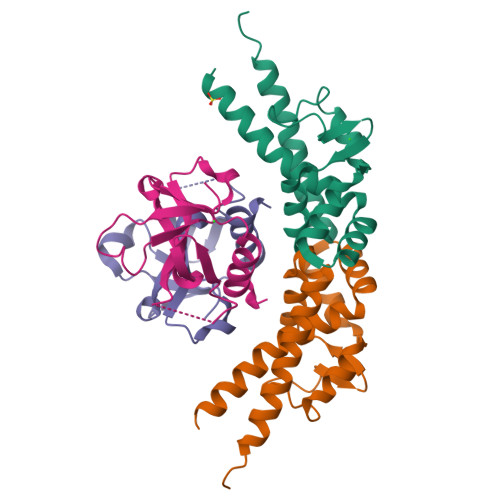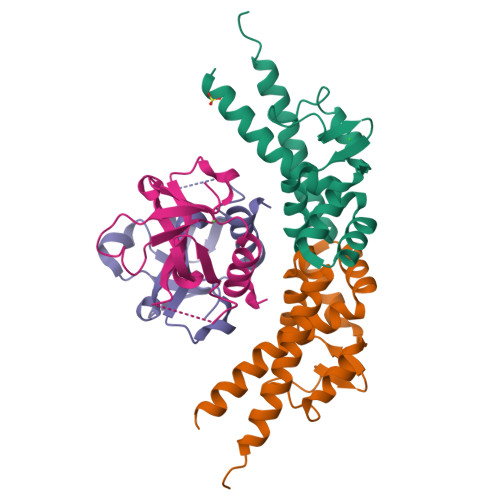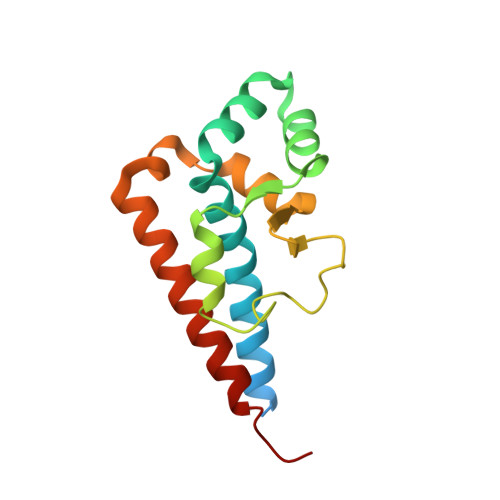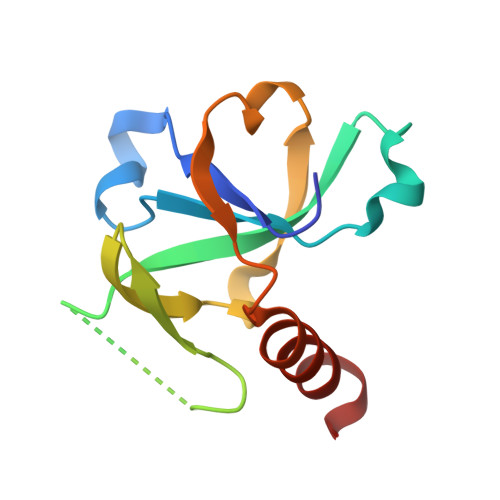Alternative interactions define gyrase specificity in the CcdB family.
De Jonge, N., Simic, M., Buts, L., Haesaerts, S., Roelants, K., Garcia-Pino, A., Sterckx, Y., De Greve, H., Lah, J., Loris, R.(2012) Mol Microbiol 84: 965-978
- PubMed: 22582791
- DOI: https://doi.org/10.1111/j.1365-2958.2012.08069.x
- Primary Citation of Related Structures:
4ELY, 4ELZ - PubMed Abstract:
Toxin-antitoxin (TA) modules are small operons associated with stress response of bacteria. F-plasmid CcdB(F) was the first TA toxin for which its target, gyrase, was identified. Plasmidic and chromosomal CcdBs belong to distinct families. Conserved residues crucial for gyrase poisoning activity of plasmidic CcdBs are not conserved among these families. Here we show that the chromosomal CcdB(Vfi) from Vibrio fischeri is an active gyrase poison that interacts with its target via an alternative energetic mechanism. Changes in the GyrA14-binding surface of the Vibrio and F-plasmid CcdB family members illustrate neutral drift where alternative interactions can be used to achieve the same functionality. Differences in affinity between V. fischeri and F-plasmid CcdB for gyrase and their corresponding CcdA antitoxin possibly reflect distinct roles for TA modules located on plasmids and chromosomes.
Organizational Affiliation:
Structural Biology Brussels, Department of Biotechnology, Vrije Universiteit Brussel, Pleinlaan 2, B-1050 Brussels, Belgium.





















